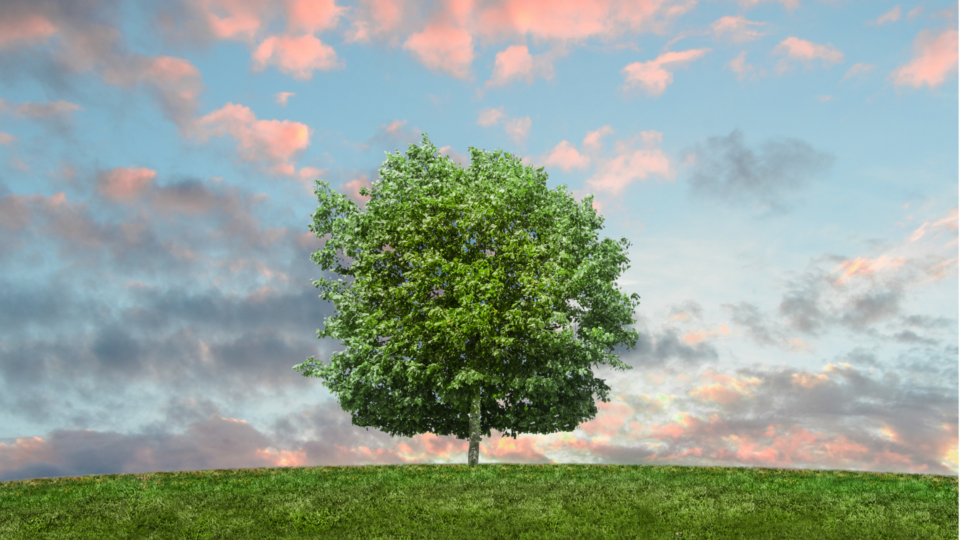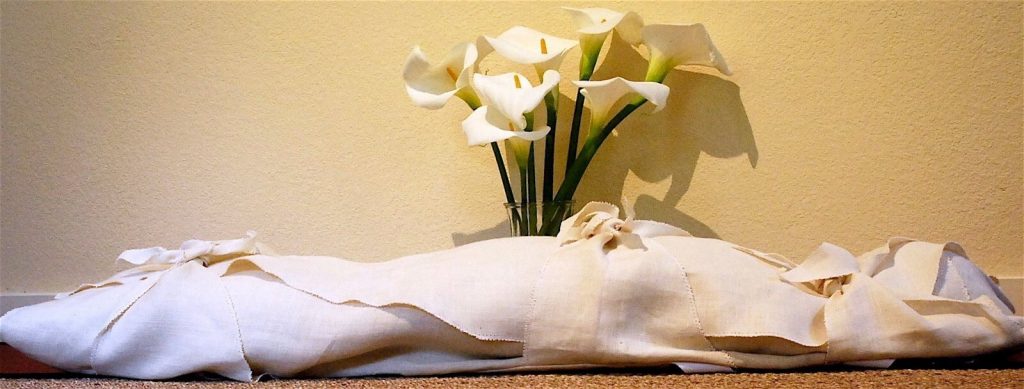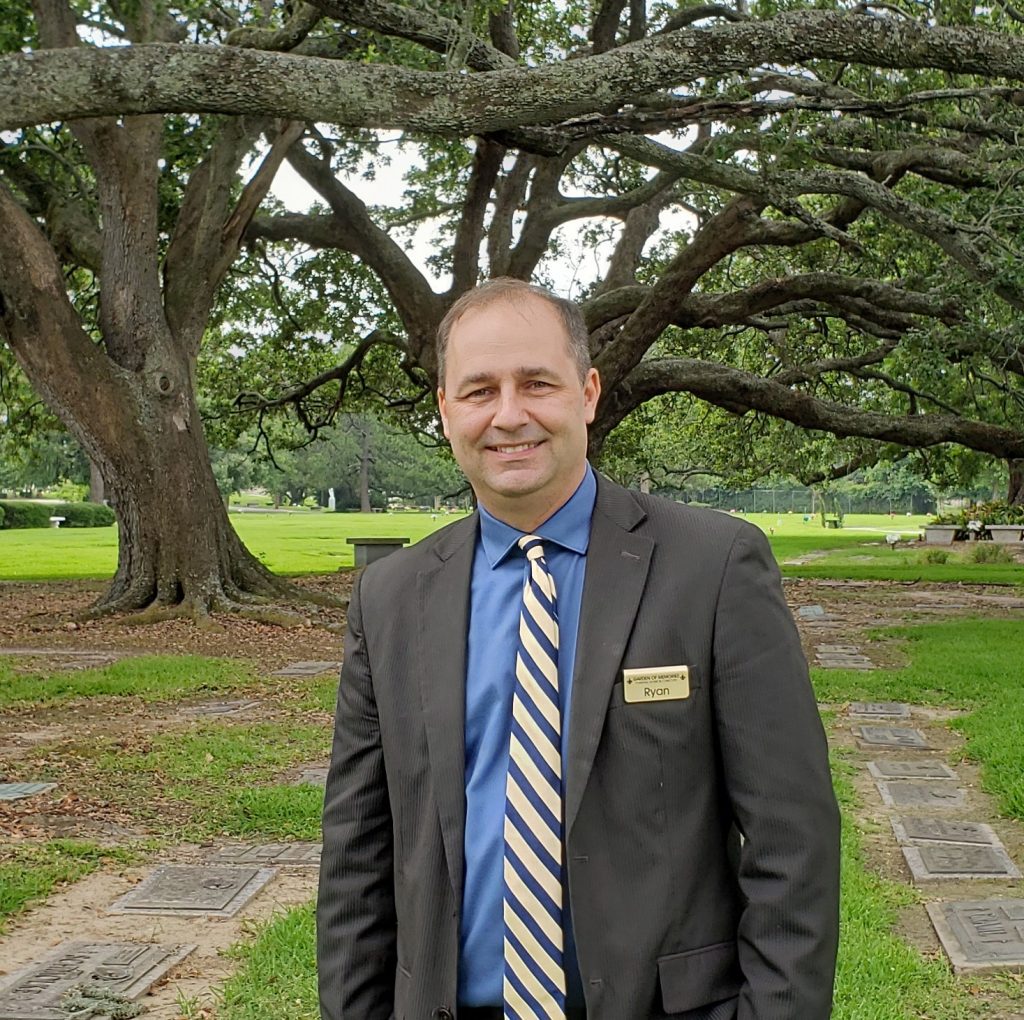
Aging in Nola: The earth as your vessel
July 7, 2019
While NolaBoomers.com is under construction, our articles can be found here on our sister site, Nola Family.
“In most religions, including Catholicism, there are no religious barriers for green burials.”
Now you can literally leave the earth a better place than how you found it thanks to environmentally-friendly burials.
Worried about your carbon footprint after you slip the surly bonds of earth — plan your exit with a green burial. A green burial is a fairly new concept to the New Orleans area. It offers a greener solution to traditional burial services that can leach toxic chemicals into the ground or send pollutants into the air.
That’s because a typical green burial eschews chemical embalming, a concrete or plastic vault lining, and even a casket or coffin, says Ryan Pierce, a family service counselor at the Garden of Memories Funeral Home and Cemetery in Metairie.
Instead, the deceased is bathed, wrapped in a cotton or silk shroud, then buried in his or her natural state — unembalmed, flesh to dirt.
Although founded in 1939, Garden of Memories only began offering green burial services last summer. The funeral home is considered a hybrid, meaning it still offers traditional burial and cremation services on 60 acres while reserving about one acre for green burials. To date, just under a dozen people have purchased green burial plots.
“We worked with LifeCity to help us better serve our customers,” Pierce says about the impact management consulting firm, which helps local businesses go earth-friendly. Green burials is just
one aspect of the Garden of Memories’ broader, greener mission.

“That’s much easier to do on the North Shore than it is in New Orleans.”
Side effects
Without a casket, no trees are cut down for wood. Without the embalming process, a custom that started relatively recently during the Civil War, toxic chemicals can’t be exposed to funeral professionals or seeped into the soil. And without cremation, the natural gas used to heat the crematory are eliminated and carbon dioxide aren’t released into the atmosphere.
“This is just the last thing someone can do — the last choice they can make to make the best decision for the environment,” Pierce says. “It’s actually a positive impact where a traditional burial and cremation is a negative impact.”
In a green burial, the body is buried at 3.5 feet where its decomposition feeds the surrounding grubs and bugs in the soil, and releases nitrogen for nearby trees and bushes. If the body is buried any deeper, it would have no positive effects on the environment, Pierce says. The burial is also considered deep enough to keep predators away.
A traditional burial can have costly side effects for the environment.
According to the Green Burial Council, traditional burials in the U.S. use 4.3 million gallons of embalming fluid, 20 million feet of wood, 1.6 million tons of concrete, 64,500 tons of steel, and countless caskets and vaults leaching iron, copper, lead, cobalt, and zinc into the soil, annually.
Pierce says about 50 percent are traditional burials using either mausoleums or caskets and vaults, while the rest are cremations, but that number has been steadily rising. Most think cremation is the more environmentally conscious way to go because they just aren’t aware green burials exist in the New Orleans area.
Once they’re aware of the option, people certainly want to learn more about it, Pierce says. In a 2018 National Funeral Directors Association consumer awareness and preferences study, nearly 54 percent of people polled expressed an interest in learning more about green burials.
“Who’s going to go back to putting toxic things in the ground when they know they don’t have to?” says Lee Webster, a Green Burial Council board member.
Currently, the Garden of Memories is the only professional funeral service that offers green burial services and planning in the area. According to Pierce, the next closest is in Houston.
Technically, most of the green or natural burial products found online — shrouds, pods, even paper urns — can be purchased and used for a burial in a non-traditional location in Louisiana, but could be challenging to achieve. In the state, bodies must be buried in established cemeteries — green or not — meaning that you could be buried in your own backyard (with a permit), but the land must be owned outright and appropriately rezoned. The land then becomes a family cemetery, which comes with its own set of laws and regulations.
“That’s much easier to do on the North Shore than it is in New Orleans,” Pierce says.

“It’s a very American idea that we get to own property and have things like headstones once we’ve left the planet.”
The cost of a green afterlife
Just like a traditional burial or cremation, the cost of a green burial depends on the services requested. A traditional burial with embalming, vault, and casket runs on the higher end, an average of $8,500 according to the AARP, while a cremation service depends on whether there is a service or burial, usually costing a third as much as a regular burial.
“It’s kind of right in the middle between cremation cost and a traditional burial cost,” Pierce says about the Garden of Memories green burials. Their burial shrouds cost $600, but that doesn’t include the cost of the plot or the actual services.
Another reason why green burials haven’t caught on yet in New Orleans is that most funeral homes’ bread and butter are casket sales and the fees associated with the embalming of the body. Green burials don’t bring in the green because the body is simply washed and wrapped in the shroud.
With a green burial, people tend to want a religious service included, but they can go without having any services at all. In most religions, including Catholicism, there are no religious barriers for green burials.
“A shroud is actually how Jesus was buried,” Pierce says.
Other costs associated with a green burial are headstones. The most natural way, however, is to forego any headstone type at all to preserve the natural area.
“It’s a very American idea that we get to own property and have things like headstones once we’ve left the planet,” says Webster, the Green Burial Council board member. “Land conservation is the primary goal of having a green burial in the first place.”
Taking your family for a picnic in the cemetery sounds macabre today, but imagine hiking, bird-watching, or picnicking under a tree where a loved one is eternally resting.
 Kate Stevens is a freelance writer and frequent contributor to Nola Boomers.
Kate Stevens is a freelance writer and frequent contributor to Nola Boomers.

